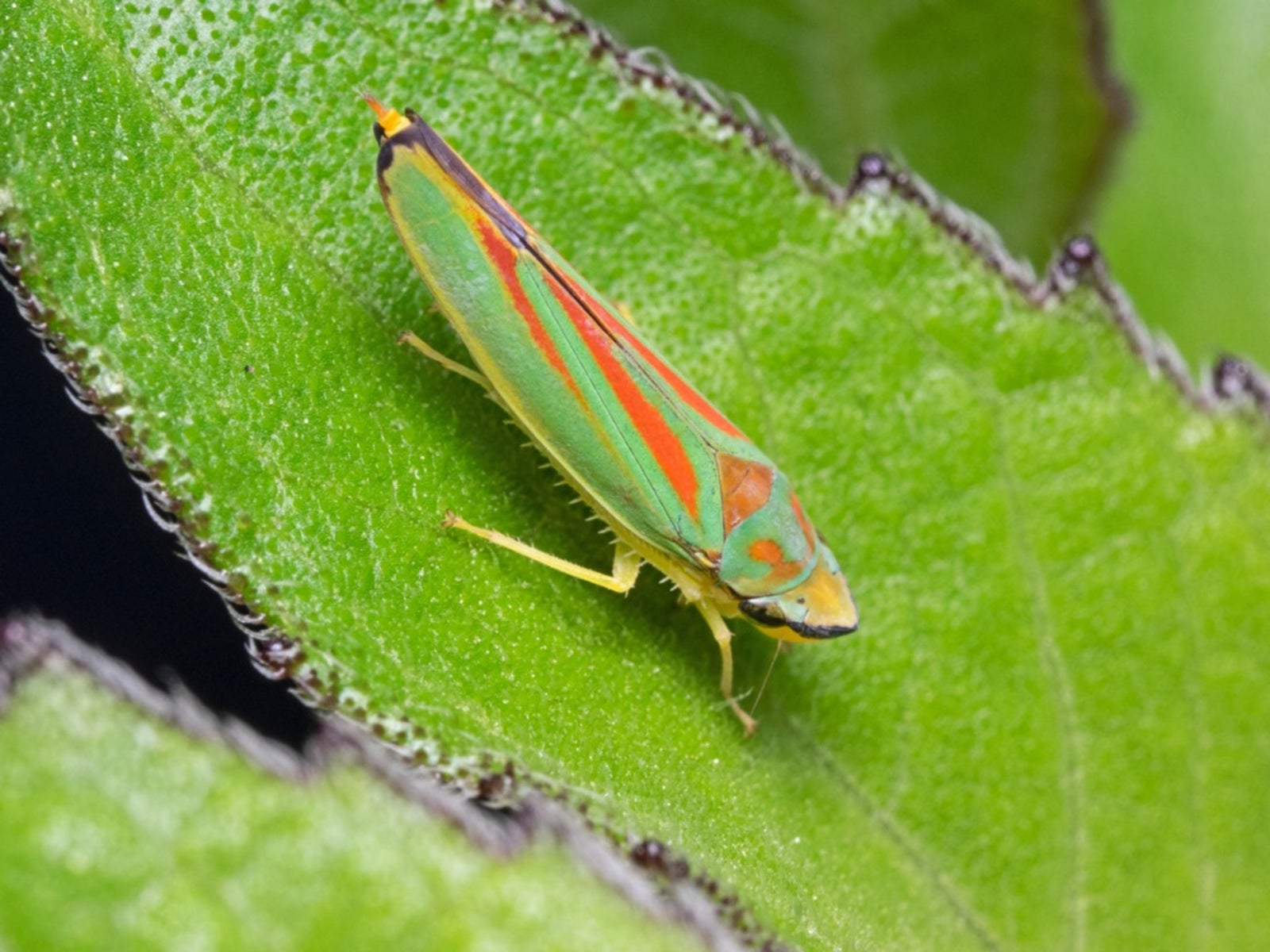Leafhopper Damage On Plants: How To Kill Leafhoppers
Leafhopper damage on plants can be extensive. As the name implies, they're agile, mobile and easier to eradicate before they become hungry adults.
Caroline Bloomfield

Pesky leafhoppers are tiny insects with an insatiable appetite. Leafhopper damage on plants can be extensive, so learning how to kill leafhoppers in the garden and ridding lawns of leafhopper pests is important.
Leafhoppers range in size from 3 to 15 mm. Their wings are positioned like a roof over their backs and they have small spines on both hind legs. Although most leafhoppers are green, they can range in colors, especially the ones that live in the turf grass that can be more brownish in color. Nymphs are even smaller with small wing buds. Common host plants include maple, apple, cottonwood, dogwood, oak, poplar, willow, and ornamental plants.
Ridding Lawns of Leafhopper Pests
Many people do not bother with leafhopper control in lawns, as the damage is extremely hard to spot. However, some homeowners use insecticidal sprays on their lawns, which seem to do an admirable job at controlling populations.
Leafhopper Damage on Plants
Leafhoppers in certain states often attack apples, grapes, potatoes, and roses in the home garden where damage may be more noticeable.
All stages of the insect feed on sap from leaves. Leaves become white, stippled in spots. Leafhopper damage on plants in the garden is remarkably similar to that of spider mites.
With an increase in populations, dark excrement can be seen on plants, making them unattractive. Damage can be more serious when leafhoppers carry bacteria from plant to plant. This is seen in a number of tree species such as elm, oak, maple and sycamore and results in leaf scorch. Leafhoppers are often found on the underside of the leaves.
How to Kill Leafhoppers
Plants in the home garden that display signs of leafhopper damage should be promptly removed and disposed of to avoid further spread of bacteria. It is vital not to over-fertilize plants, as this will only encourage leafhopper activity. Insecticidal soaps can be used when the leafhoppers are young, but because of their mobility, they are difficult to eradicate completely.
Sign up for the Gardening Know How newsletter today and receive a free copy of our e-book "How to Grow Delicious Tomatoes".
Nurseries often use a systemic spray on trees and bushes. However, treating leafhoppers must involve careful monitoring, as sprays are most effective before adults appear. We suggest discussing any use of chemicals with your local extension agent or garden center expert. There may be safer, less toxic ways to deal with leafhoppers without endangering other plants, insects, wildlife and humans.
- Caroline BloomfieldManager of Marketing Communications